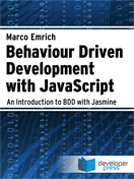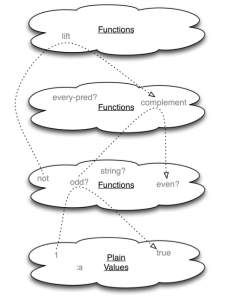At the end of July the lucky winner will get a physical copy with an ebook for the runner up.
Two’s Complement

Just getting code to work on your machine isn’t enough. There are many other vital skills that complement coding.
This month we are looking at books that address these important complementary. Tools and skills for operations, project management and web design.
Dev Ops
Gone are the days when developers threw their code over the wall for the operations teams to sort out. Continuous integration into virtualised environments requires close collabortaion and sophisticated tooling.
Implementing VMware Horizon View 5.2
by Jason Ventresco

VMware Horizon View helps you simplify desktop and application management while increasing security and control. This book will introduce you to all of the components of the VMware Horizon View suite, walk you through their deployment, and show how they are used. We will also discuss how to assess your virtual desktop resource requirements, and build an optimized virtual desktop.
“Implementing VMware Horizon View 5.2” will provide you the information needed to deploy and administer your own end-user computing infrastructure. This includes not only the View components themselves, but key topics such as assessing virtual desktop resource needs, and how to optimize your virtual desktop master image.
You will learn how to design and deploy a performant, flexible and powerful desktop virtualization solution using VMware Horizon View. You will implement important components and features, such as VMware View Connection Server, VMware View Composer, VMware View Transfer Server, and VMware View Security Server.
Puppet 3 Beginner’s Guide
by John Arundel
Everyone’s talking about Puppet, the open-source DevOps technology that lets you automate your server setups and manage websites, databases, and desktops. Puppet can build new servers in seconds, keep your systems constantly up to date, and automate daily maintenance tasks.
“Puppet 3 Beginner’s Guide” gets you up and running with Puppet straight away, with complete real world examples. Each chapter builds your skills, adding new Puppet features, always with a practical focus. You’ll learn everything you need to manage your whole infrastructure with Puppet.
“Puppet 3 Beginner’s Guide” takes you from complete beginner to confident Puppet user, through a series of clear, simple examples, with full explanations at every stage.
Through a series of worked examples introducing Puppet to a fictional web company, you’ll learn how to manage every aspect of your server setup. Switching to Puppet needn’t be a big, long-term project; this book will show you how to start by bringing one small part of your systems under Puppet control and, little by little, building to the point where Puppet is managing your whole infrastructure.
Jira
Projects are no longer managed in spreadsheets and GANT charts in locked rooms. The whole team takes responsibility for ensuring that everything gets done, and that needs the support of a good tool like Jira.
JIRA 5.2 Essentials
by Patrick Li

Atlassian’s JIRA provides issue tracking and project tracking for software development teams to aid speed of development and quality of code. This book will show you how to develop software more efficiently by planning, designing, and customizing your own JIRA implementation.
JIRA is a popular issue tracking product designed for better bug tracking, issue tracking, and project management. JIRA 5.2 Essentials provides a comprehensive guide covering everything you will need to plan, set up, design, customize, and manage your software development projects efficiently and to a professional standard.
In this practical book you will learn how to design and implement JIRA for project and issue tracking. You will jump into the installation and design of JIRA before going through the required techniques to effectively manage issues that threaten your software development project.
JIRA 5.x Development Cookbook
by Jobin Kuruvilla

JIRA provides issue tracking and project tracking for software development teams to improve code quality and the speed of development.
“JIRA 5.x Development Cookbook” is a one stop resource to master extensions and customizations in JIRA. You will learn how to create your own JIRA plugins, customize the look and feel of your JIRA UI, work with workflows, issues, custom fields, and much more.
“JIRA 5.x Development Cookbook” starts with recipes on simplifying the plugin development process followed by a complete chapter dedicated to the plugin framework to master plugins in JIRA.
Then we will move on to writing custom field plugins to create new field types or custom searchers. We then learn how to program and customize workflows to transform JIRA into a user friendly system.
Responsive Web Design
First there were desktops, then mobiles, then tablets, then mini tablets, then phablets…
Thankfully, responsible web design allows us to craft user interfaces that provide an optimal viewing experience across the every growing range of devices.
HTML5 and CSS3 Responsive Web Design Cookbook
by Benjamin LaGrone

The Internet is going mobile. Desktop computer sales keep falling as the mobile device marketplace burgeons. Web development methods are rapidly changing to adapt to this new trend. HTML5 and CSS3 Responsive Web Design Cookbook, for all of today’s wireless Internet devices, gives developers a new toolbox for staying connected with this on-the-run demographic.
HTML5 and CSS3 Responsive Web Design Cookbook is the programmer’s resource for generating websites that effortlessly interface with modern mobile devices. Using its clear instructions you can create responsive applications that make snappy connections for mobile browsers and give your website the latest design and development advantages for reaching mobile devices.
HTML5 and CSS3 Responsive Web Design Cookbook is full of how-to recipes for site enhancements and optimizing your sites for the latest devices and the mobile Web.
Responsive Web Design by Example
by Thoriq Firdaus

By following the detailed step-by-step instructions in this structured reference guide, you will learn how you can build engaging responsive websites. With coverage of Bootstrap, Skeleton, and Zurb Foundation you’ll learn about three of the most powerful responsive frameworks available today.
Leading you through by practical example, you’ll find that this essential reference develops your understanding by actually helping you create beautiful websites step by step in front of your very eyes. After going over the basics, you’ll be able to choose between creating your own responsive portfolio page with Skeleton, building a stunning product page with Bootstrap, or setting up your own professional business website with Zurb Foundation. Ultimately you’ll learn how to decide which framework is right for you, and how you can deploy and customize it to your exact specifications!




















